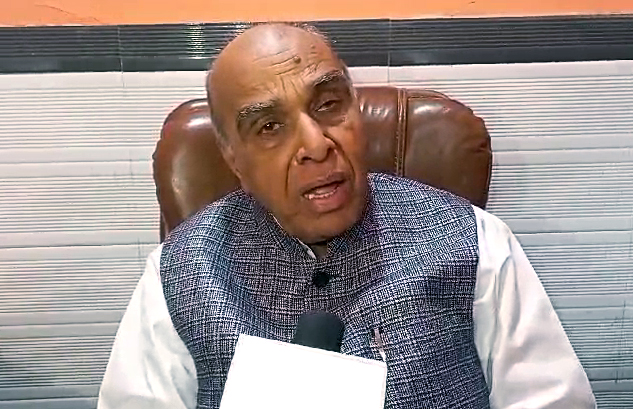World Ozone Day 2024 celebrated in New Delhi with the theme: “Montreal Protocol – Advancing Climate Actions. Under the leadership of Prime Minister Narendra Modi ‘Ek Ped Maa Ke Naam’ initiative comes to light to promote a sustainable future and protects Mother Earth. India released its cooling action plan to phase out chlorofluorocarbons (CFCs), a major refrigerant widely used in all cooling equipment like air-conditions, freeze, foam applications, etc. It is a major gas which is contributing to rapid depletion of the Ozone layer and warming climate.
CFCs are nearly 2,000 times more potent than carbon dioxide in terms of their global warming potential. Because of this, the world has come together to phase out the CFC by 2040 at their 28th Meeting of the Parties on 15 October 2016 in Kigali, Rwanda under the Montreal Protocol.
To phase out CFC, the Indian government has brought the Indian Cooling Action Plan (ICAP) document to phase out demand for refrigerants by 2037-38. It recommends an integrated approach to meet cooling requirements across the sectors including the Ministry of Road and Transport, Highway, Ministry of Power, Urban Development and others. It has primarily recommended strengthening public mobility infrastructure like metro, trains and buses to discourage personal vehicles in Tier 2&3 cities and the adoption of potential low global warming potential (GWP) energy efficiency alternatives to be worked out. It is also recommended for recycling and management of refrigerants generated from end-of-life vehicles or servicing. Further, it has recommended the Department of Science and Technology for research and development in the area of low refrigerant charge energy efficiency in Mobile Air Conditioning.
Moreover, the Bureau of Energy Efficiency should introduce testing agencies to provide realistic fuel efficiency and emissions profiles and green labelling systems for cars to promote efficient vehicles.
India signatory to both
The Ozone Cell, Ministry of Environment, Forest and Climate Change, Government of India has been celebrating World Ozone Day since 1995 at the National and State levels. The Vienna Convention for the Protection of the Ozone layer was signed on March 22, 1985 and the Montreal Protocol on substances that deplete the Ozone layer was signed on September 16, 1987. India became Party to the Vienna Convention for the Protection of the Ozone Layer on March 18, 1991 and the Montreal Protocol on substances that deplete the Ozone layer on June 19, 1992.
Ozone Layer exists in the Stratosphere, between 10 KM and 40 KM above the Earth’s surface and protects us from UV radiation from the Sun. Ozone formed in the stratosphere is called stratospheric ozone or good Ozone. Without the Ozone layer, radiation from the sun would reach Earth directly, having ill effects on human health, i.e., eye cataracts, skin cancer, etc., and adverse impacts on agriculture, forestry and marine life.
Man-made chemicals containing chlorine and bromine reach the stratosphere and undergo a complex series of catalytic reactions, leading to the destruction of ozone. These chemicals are called Ozone Depleting Substances.
UN General Assembly and its efforts
The UN General Assembly on January 23, 1995 adopted a resolution 49/114, which proclaims September 16 as the International Day for the preservation of the Ozone layer, to commemorate the signing of the Montreal Protocol on substances that deplete the Ozone Layer, which was signed on September 16, 1987. Since 1995, this day is celebrated every year as the International Day for the preservation of the Ozone layer and commemorates the date of signing of the Montreal Protocol.
Achievements of India
Contribution and achievements of India for the protection of the stratospheric ozone and implementation of the Montreal Protocol are multifold. India not only developed and put in place policies/ regulations for phase-out of ODS as per the Montreal Protocol Schedule within the country, but also played a visionary role since the inception of the Montreal Protocol including in the key policy negotiations on behalf of the developing nations.
Comprehensive Ozone Depleting Substances (ODSs) (Regulation and Control) Rules, 2000 were developed and put in place under the Environment (Protection) Act 1986, which were utmost important for the successful implementation of ODS phase out in a vast country like India. The unique feature of these Rules was banning the use of CFCs and halons in manufacturing of new equipment as early as from 1st January 2003. Another significant achievement was phase-out of production and consumption of virgin halons as early as 2002, being high-Ozone Depleting Potential (ODP) chemicals.
India accelerated the phase-out of production and consumption of CFCs with effect from 1st August 2008, 17 months ahead of the Montreal Protocol schedule except for use in pharmaceutical.India has phased out Chlorofluorocarbons, Carbon tetrachloride, Halons, Methyl Bromide and Methyl Chloroform for controlled uses as on 1 January 2010, in line with the Montreal Protocol phase-out schedule. India successfully met the 2013 target of freeze of HCFC production and consumption and 10% phaseout targets of HCFCs in 2015, as per the accelerated phase-out schedule of the Montreal Protocol. In line with the accelerated phase out schedule of the Montreal Protocol for HCFCs to achieve 35% reduction target the production and consumption of HCFCs, India successfully achieved the reduction of consumption and production of HCFCs by 44% from the baseline. The net contribution towards reduction of direct Carbon Di- Oxide (CO2) emissions are 42,62,100 MT CO2 Eq. per year from 2020 to 76,97,600 MT CO2 Eq. per year from 2023.
The efforts of government were praised by United Nations Environment Programme (UNEP)
In the words of Valentin Foltescu, Officer in Charge of the United Nations Environment Programme (UNEP) said that India’s journey under the Montreal Protocol is embarked upon by significant milestones achieved through the constructed efforts of stakeholders. Over the past three decades, India has successfully implemented 478 projects. India has exceeded its initial goal of reducing hydrofluorocarbons by 50% by 2023 and has achieved a 63% reduction. Expressing satisfaction with India’s performance UNEP points out that since India adopted the 1987 Montreal Protocol, 99 per cent of ozone-depleting substances have been eliminated.
Way forward
The UNEP representative said that they are working with micro and medium enterprises to discontinue the usage of ozone-depleting substances because these Micro and Medium Enterprises in India are a key driver of India’s economic growth and also there will play a big role in phase out of ozone-depleting substances. They also added that in India through strengthening partnerships between public and private sector there will be more investment in research and development and technology transfer to more environmentally friendly, and affordable alternatives.
By Praver Tripathi (DD India)




















